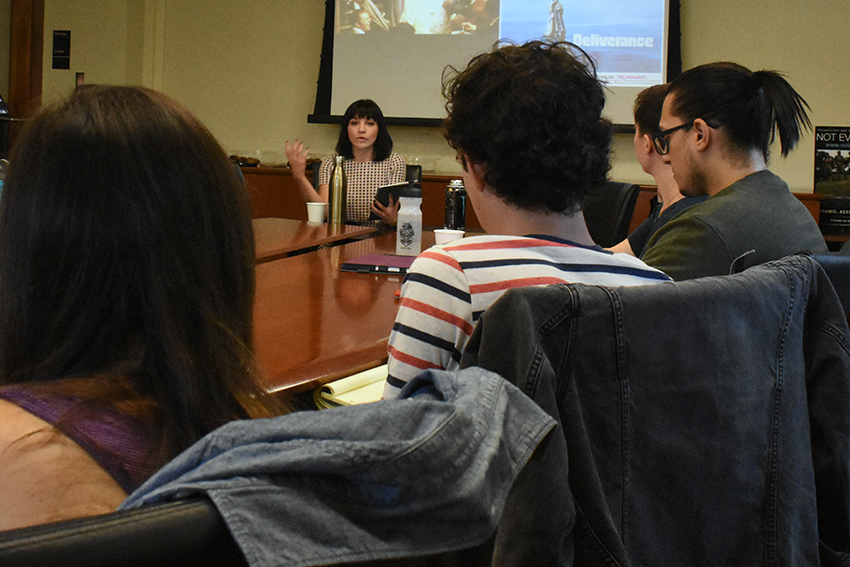The racial and regional tensions in the U.S. at the beginning of the civil rights movement were examined through the lens of the American film industry on Friday.
The history department’s Symposium on Gender, History and Sexuality featured Jackie Pinkowitz, media studies Ph.D. candidate, who spoke about the imagined south in the era of the civil rights movement, a social and cultural ideological construct which embodies America’s uncertainties concerning race relations.
“We talk about the south as an ‘other’ but in so doing, it works to show us problems that are actually quite national, particularly related to issues of blackness, whiteness and race,” Pinkowitz said.
Pinkowitz viewed two specific films, “Island in the Sun” and “Band of Angels” which were released in 1957, shortly before the start of the civil rights movement, to explain the film industry’s take on the growing racial tensions of the time.
Since the 1930s, on-screen sexual relationships between the black and white races had been explicitly forbidden. The films were made right after the miscegenation ban, which prohibits films to depict relationships between different races, was lifted, Pinkowitz said.
“Miscegenation represented not only a source of risk, but also a compelling, potentially profitable sense of the taboo,” Pinkowitz said. “It was opportunely suited for the Hollywood film industry at this time.”
Pinkowitz said although the films faced some censorship, they were widely profitable and ultimately did not support integration or racial mixing.
“Though this proliferation of miscegenation films led critics to optimistically declare that Hollywood was finally ‘tackling the race issue,’ the industry’s capacity for racial and regional critique in commentary remained ultimately quite limited,” Pinkowitz said.
Brittany Erwin, co-coordinator for the symposium, said although the movies did not make progress addressing the issues, they allowed for more opportunities to discuss it.
“I think even engaging with mixed race couples on-screen does cultural work in this moment,” said Erwin, a history graduate student. “It increases opportunities for those conversations even if it doesn’t resolve them for many many years.”
Jesse Ritner, a history graduate student, said the lack of social impact the movies actually had was not surprising given the time they were made.
“It’s shockingly easy sometimes to convince yourself that you’re really at the forefront (of change),” Ritner said. “It’s believable that (production companies) thought they were doing this grand good even if they were really just profiting off of other people’s struggle.”





















